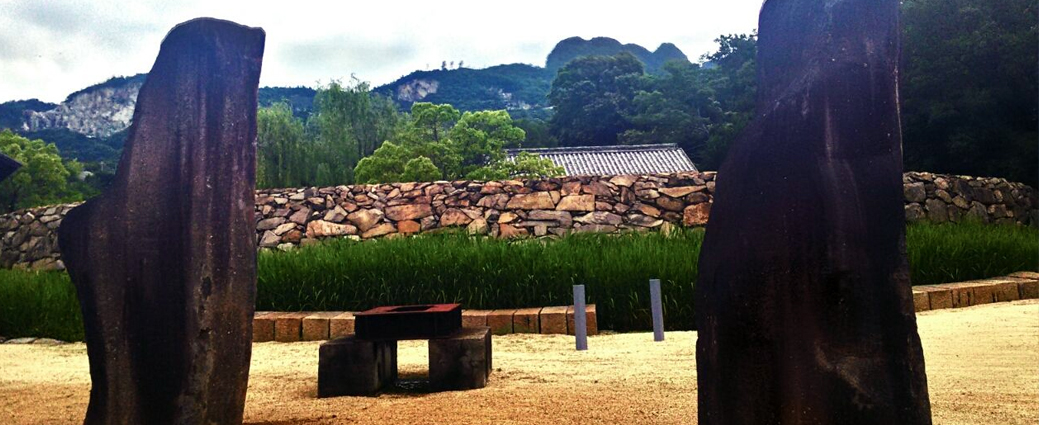Isamu Noguchi Memorial Garden
Isamu Noguchi (1904-1988) was a prominent Japanese American artist, sculptor and landscape designer. Although born, educated and based in the United States, Isamu Noguchi maintained a workshop in Japan and spent months at a time working there towards the end of his nearly 65 year long career. Noguchi’s major works include bridges at the Hiroshima Peace Park, the garden at the UNESCO headquarters in Paris and an influential line of modern furniture designs among others.
Isamu Noguchi’s Japanese home and workshop were located in Mure, a small town near central Takamatsu that is famous for its stone masonry. After Noguchi’s death, the workshop was converted into the Isamu Noguchi Garden Museum which exhibits both his art and his work and living space.
Tours to the museum start with a visit to his workshop, a relocated Edo Period storehouse, laid out with his tools as if he were about to enter. In the yard outside the workshop are almost 150 stone sculptures, many of which are unfinished. A dozen finished sculptures are exhibited in a large Meji Period warehouse nearby which Noguchi relocated and restored. “Energy Void”, the largest of the artwork on display, is a 3.6 meter tall sculpture of black Swedish granite that the building was literally built around.
After visiting the workshop and warehouse, the tour continues across the street to Isamu Noguchi’s home, a relocated Edo Period merchant residence which the artist redesigned to suit his taste and comfort while retaining traditional Japanese aesthetics. Finally, visitors are taken up to the gardens on the hill behind his home which he designed for his 80th birthday.
Contact us
Tel: 01865 841443
Fax: 01865 841445
Into Japan Specialist Tours
The Dovecote, Manor Farm, Ball Lane, Tackley, OX53AG


